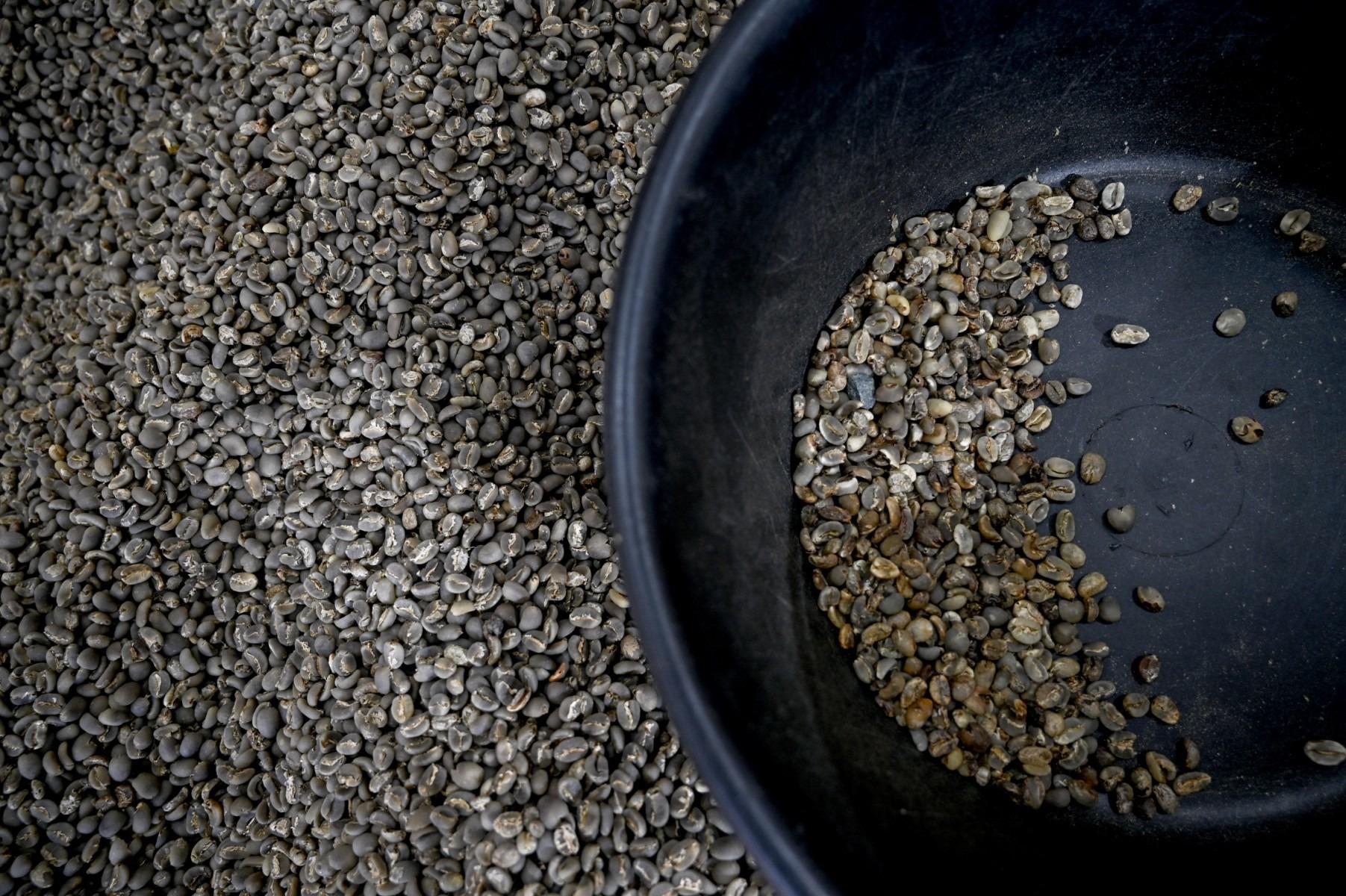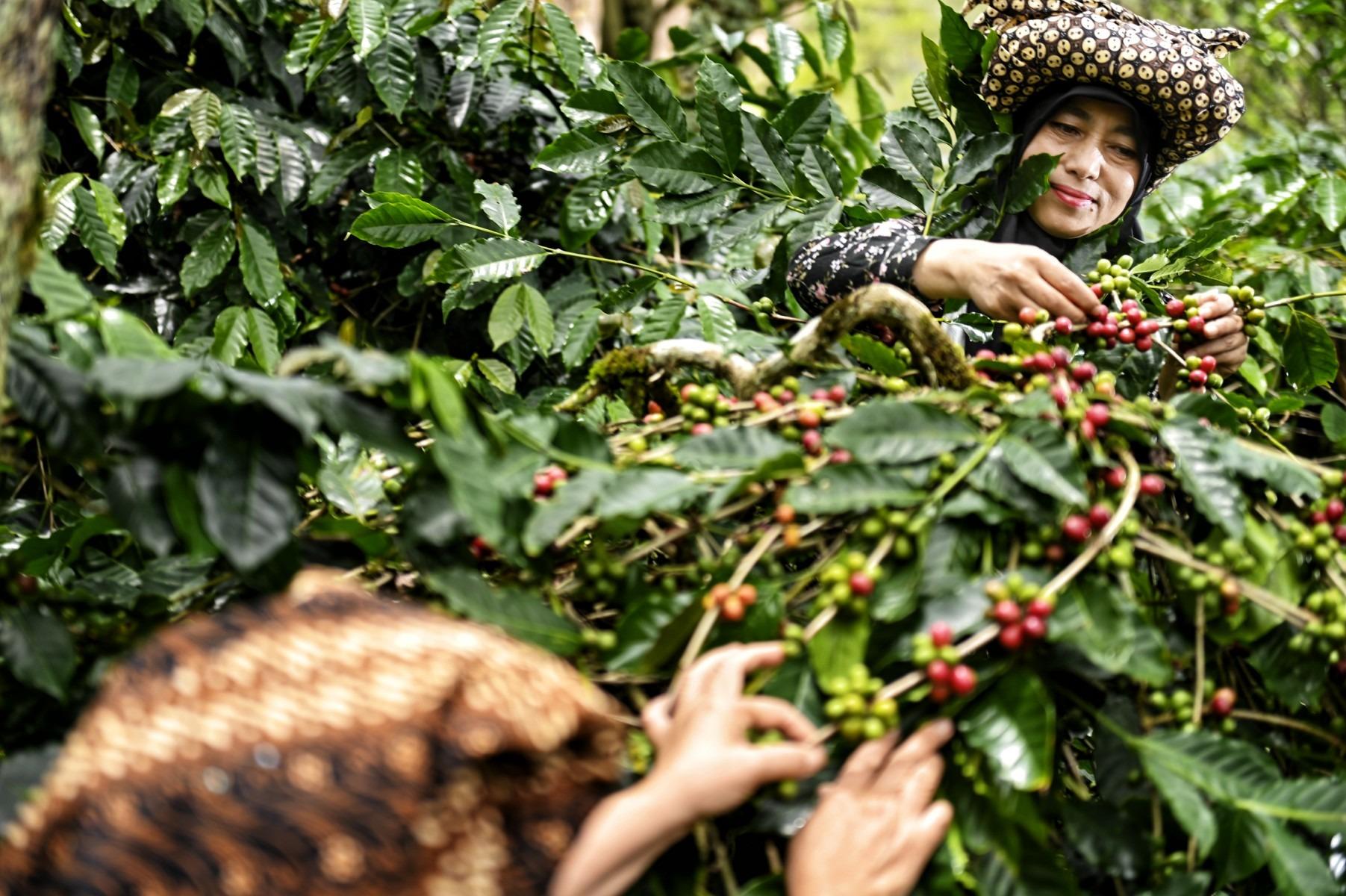 This file photo taken on Sept 19, 2022 show organic Gayo arabica coffee beans being sorted before export to the US and Europe at the Ketiara coffee warehouse in the highlands of Takengon, Aceh province, Indonesia. (PHOTO / AFP)
This file photo taken on Sept 19, 2022 show organic Gayo arabica coffee beans being sorted before export to the US and Europe at the Ketiara coffee warehouse in the highlands of Takengon, Aceh province, Indonesia. (PHOTO / AFP)
JAKARTA/SINGAPORE - El Nino’s dry weather threatens to further dent coffee production in Indonesia, the world’s fourth largest grower, after excessive rains dragged down output to its lowest in more than a decade, driving global prices to all-time highs.
Lower coffee output in Indonesia, which mainly produces robusta beans - having a bolder and more bitter flavor than the arabica variety - could trigger more gains in prices which have climbed more than 40 percent in 2023 and hit a record high in June.
“There are forecasts of El Nino weather leading to dryness towards the end of the year and early next year in Indonesia,” said Carlos Mera, head of agri commodities markets research at Rabobank.
Indonesia’s weather agency (BMKG) said the El Nino weather phenomenon, which typically brings prolonged hot and dry weather to the tropical country, is already affecting more than two-thirds of the nation, including Java and parts of Sumatra, two key coffee producing areas
“If there is dryness, Indonesia’s coffee production could fall further in 2024/25.”
Indonesia’s weather agency (BMKG) said the El Nino weather phenomenon, which typically brings prolonged hot and dry weather to the tropical country, is already affecting more than two-thirds of the nation, including Java and parts of Sumatra, two key coffee producing areas.
The dry conditions contrast with high rainfall in the Southeast Asian nation between 2020 and 2022 due to La Nina, while heavy rains have also been experienced during the first five months of this year.
ALSO READ: Indonesia's growing thirst for coffee drains premium bean supplies
In 2023/24, Indonesia’s coffee output is forecast at 9.7 million 60-kg bags, down from 11.85 million bags a year ago and lowest since 2011/12, according to US Department of Agriculture data.
Rain reliance
Plantations in Sumatra and Java are likely to bear the brunt of any drought, with meteorologists forecasting El Nino to intensify towards the end of 2023 and early next year, a crucial time for flowering and fruit formation.
Most Indonesian coffee plantations are rain-fed. The threat of dryness follows higher precipitation over the past several months across Sumatra and Java, which reduced coffee output.
 In this file photo dated Sept 18, 2022, a woman picks Gayo arabica coffee beans during a harvest in Paya Tumpi, a tourism village in Takengon, central of Aceh province, Indonesia. (PHOTO / AFP)
In this file photo dated Sept 18, 2022, a woman picks Gayo arabica coffee beans during a harvest in Paya Tumpi, a tourism village in Takengon, central of Aceh province, Indonesia. (PHOTO / AFP)
“This year my harvest is only 30 percent compared to last year due to too much rain, causing coffee flowers to drop off early,” said Peratin Buchori, a 55-year-old farmer in Lampung, on the southern tip of Sumatra island, known for its robusta beans.
Most Indonesian coffee plantations are rain-fed. The threat of dryness follows higher precipitation over the past several months across Sumatra and Java, which reduced coffee output
Too much rain during the flowering stage can lead flowers to drop off before berries are formed, leading to lower yields.
ALSO READ: In search of Indonesia’s best quality coffee
“Coffee supply is very thin. I personally say it is down around 25 percent compared to last year,” one Lampung-based coffee trader told Reuters, adding that the decreased supply has created panic buying in the past months.
Smallholders, low yields
Coffee yields in Indonesia range between 0.7 and 1.0 metric tons per hectare, while Vietnam, the world’s biggest robusta supplier, produces 2.7 tons per hectare.
Almost all of Indonesia’s roughly 1.25 million hectares of coffee plantations are tended by smallholder farmers, who use traditional planting methods and limited fertilizer. Many coffee trees are old, with some planted more than two decades ago.
The government has been pushing farmers to replant trees, including by providing coffee seedlings, subsidizing fertilizers, and extending cheap loans.
Almost all of Indonesia’s roughly 1.25 million hectares of coffee plantations are tended by smallholder farmers, who use traditional planting methods and limited fertilizer. Many coffee trees are old, with some planted more than two decades ago
However, just 2 percent of the total coffee plantation area has been replanted since 2018, official data showed.
“Our farmers often lack focus; they plant various commodities on their land, not just coffee,” Muhammad Rizal, director of annual and perennial crops at the agriculture ministry told Reuters.
“They are also lacking in the knowledge of good agricultural practices.”
READ MORE: Taxing times as Asia gets tough on sugar
The ministry is considering a new program that would bring in corporate buyers to help train growers in best practices while also acting as off-takers, Rizal said, likening the initiative to the country’s nascent plasma farmer scheme for Indonesia’s top commodity palm oil.


